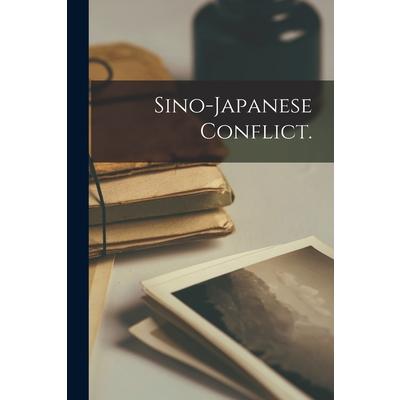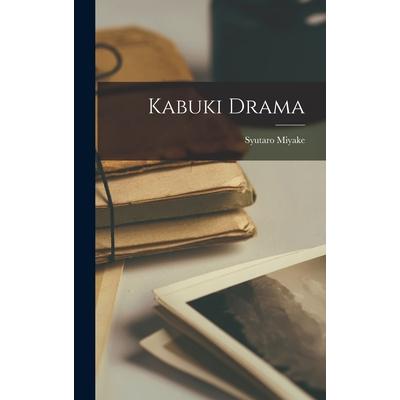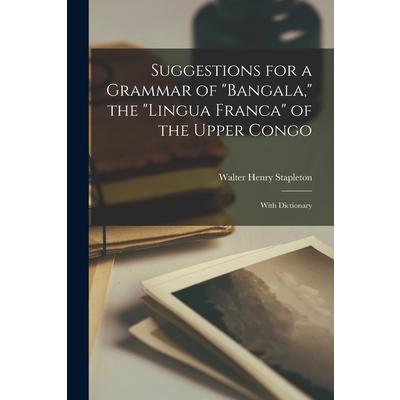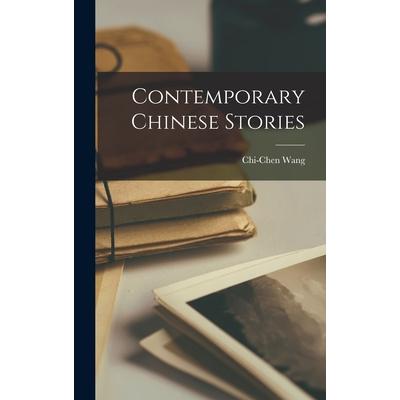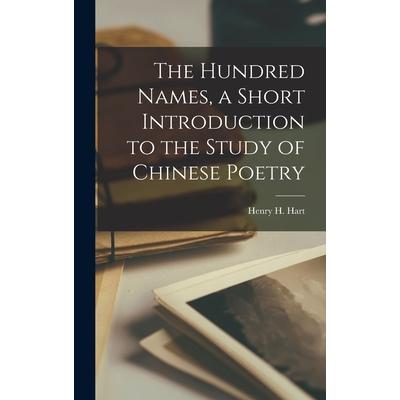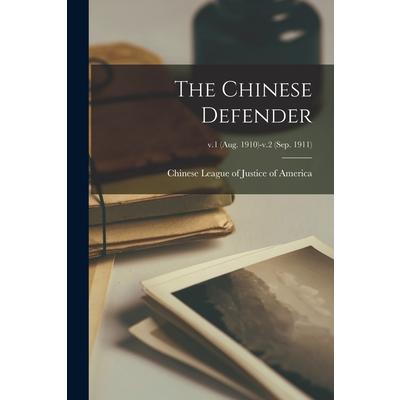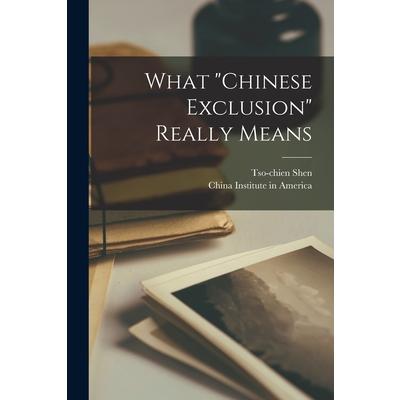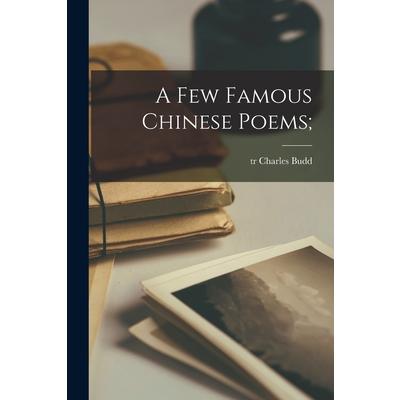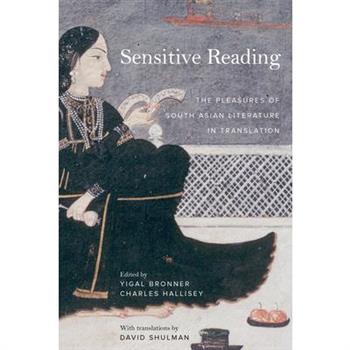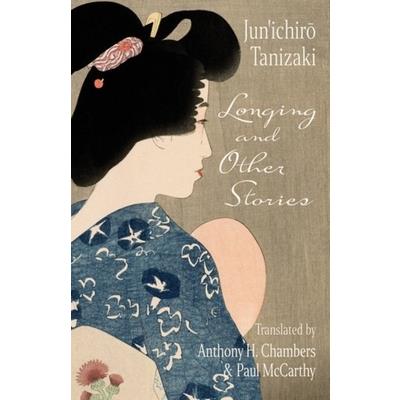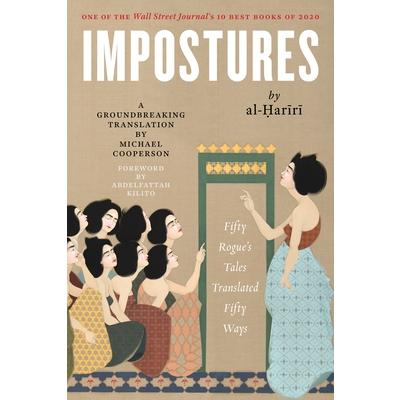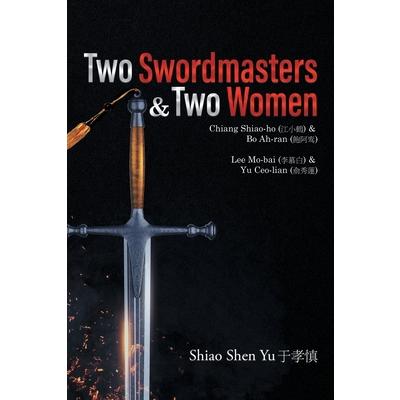The Literary Mind and the Carving of Dragons
This work has been selected by scholars as being culturally important and is part of the knowledge base of civilization as we know it.This work is in the public domain in the United States of America, and possibly other nations. Within the United States, you may freely copy and distribute this work, as no entity (individual or corporate) has a copyright on the body of the work.Scholars believe, and we concur, that this work is important enough to be preserved, reproduced, and made generally available to the public. To ensure a quality reading experience, this work has been proofread and republished using a format that seamlessly blends the original graphical elements with text in an easy-to-read typeface.We appreciate your support of the preservation process, and thank you for being an important part of keeping this knowledge alive and relevant.
Contemporary Chinese Stories
This work has been selected by scholars as being culturally important and is part of the knowledge base of civilization as we know it.This work is in the public domain in the United States of America, and possibly other nations. Within the United States, you may freely copy and distribute this work, as no entity (individual or corporate) has a copyright on the body of the work.Scholars believe, and we concur, that this work is important enough to be preserved, reproduced, and made generally available to the public. To ensure a quality reading experience, this work has been proofread and republished using a format that seamlessly blends the original graphical elements with text in an easy-to-read typeface.We appreciate your support of the preservation process, and thank you for being an important part of keeping this knowledge alive and relevant.
The Chinese Students’ Directory
This work has been selected by scholars as being culturally important and is part of the knowledge base of civilization as we know it.This work is in the public domain in the United States of America, and possibly other nations. Within the United States, you may freely copy and distribute this work, as no entity (individual or corporate) has a copyright on the body of the work.Scholars believe, and we concur, that this work is important enough to be preserved, reproduced, and made generally available to the public. To ensure a quality reading experience, this work has been proofread and republished using a format that seamlessly blends the original graphical elements with text in an easy-to-read typeface.We appreciate your support of the preservation process, and thank you for being an important part of keeping this knowledge alive and relevant.
An Elemetary Palaung Grammar
This work has been selected by scholars as being culturally important and is part of the knowledge base of civilization as we know it.This work is in the public domain in the United States of America, and possibly other nations. Within the United States, you may freely copy and distribute this work, as no entity (individual or corporate) has a copyright on the body of the work.Scholars believe, and we concur, that this work is important enough to be preserved, reproduced, and made generally available to the public. To ensure a quality reading experience, this work has been proofread and republished using a format that seamlessly blends the original graphical elements with text in an easy-to-read typeface.We appreciate your support of the preservation process, and thank you for being an important part of keeping this knowledge alive and relevant.
Notes on Chinese Literature
This work has been selected by scholars as being culturally important and is part of the knowledge base of civilization as we know it.This work is in the public domain in the United States of America, and possibly other nations. Within the United States, you may freely copy and distribute this work, as no entity (individual or corporate) has a copyright on the body of the work.Scholars believe, and we concur, that this work is important enough to be preserved, reproduced, and made generally available to the public. To ensure a quality reading experience, this work has been proofread and republished using a format that seamlessly blends the original graphical elements with text in an easy-to-read typeface.We appreciate your support of the preservation process, and thank you for being an important part of keeping this knowledge alive and relevant.
The Works of Li Po, the Chinese Poet;
This work has been selected by scholars as being culturally important and is part of the knowledge base of civilization as we know it.This work is in the public domain in the United States of America, and possibly other nations. Within the United States, you may freely copy and distribute this work, as no entity (individual or corporate) has a copyright on the body of the work.Scholars believe, and we concur, that this work is important enough to be preserved, reproduced, and made generally available to the public. To ensure a quality reading experience, this work has been proofread and republished using a format that seamlessly blends the original graphical elements with text in an easy-to-read typeface.We appreciate your support of the preservation process, and thank you for being an important part of keeping this knowledge alive and relevant.
Essay on Literature
This work has been selected by scholars as being culturally important and is part of the knowledge base of civilization as we know it.This work is in the public domain in the United States of America, and possibly other nations. Within the United States, you may freely copy and distribute this work, as no entity (individual or corporate) has a copyright on the body of the work.Scholars believe, and we concur, that this work is important enough to be preserved, reproduced, and made generally available to the public. To ensure a quality reading experience, this work has been proofread and republished using a format that seamlessly blends the original graphical elements with text in an easy-to-read typeface.We appreciate your support of the preservation process, and thank you for being an important part of keeping this knowledge alive and relevant.
The Chinese Students’ Directory
This work has been selected by scholars as being culturally important and is part of the knowledge base of civilization as we know it.This work is in the public domain in the United States of America, and possibly other nations. Within the United States, you may freely copy and distribute this work, as no entity (individual or corporate) has a copyright on the body of the work.Scholars believe, and we concur, that this work is important enough to be preserved, reproduced, and made generally available to the public. To ensure a quality reading experience, this work has been proofread and republished using a format that seamlessly blends the original graphical elements with text in an easy-to-read typeface.We appreciate your support of the preservation process, and thank you for being an important part of keeping this knowledge alive and relevant.
Miscellaneous Essays Relating to Indian Subjects.; v.2
This work has been selected by scholars as being culturally important and is part of the knowledge base of civilization as we know it.This work is in the public domain in the United States of America, and possibly other nations. Within the United States, you may freely copy and distribute this work, as no entity (individual or corporate) has a copyright on the body of the work.Scholars believe, and we concur, that this work is important enough to be preserved, reproduced, and made generally available to the public. To ensure a quality reading experience, this work has been proofread and republished using a format that seamlessly blends the original graphical elements with text in an easy-to-read typeface.We appreciate your support of the preservation process, and thank you for being an important part of keeping this knowledge alive and relevant.
The Herald Wind
This work has been selected by scholars as being culturally important and is part of the knowledge base of civilization as we know it.This work is in the public domain in the United States of America, and possibly other nations. Within the United States, you may freely copy and distribute this work, as no entity (individual or corporate) has a copyright on the body of the work.Scholars believe, and we concur, that this work is important enough to be preserved, reproduced, and made generally available to the public. To ensure a quality reading experience, this work has been proofread and republished using a format that seamlessly blends the original graphical elements with text in an easy-to-read typeface.We appreciate your support of the preservation process, and thank you for being an important part of keeping this knowledge alive and relevant.
Miscellaneous Essays Relating to Indian Subjects.; v.1
This work has been selected by scholars as being culturally important and is part of the knowledge base of civilization as we know it.This work is in the public domain in the United States of America, and possibly other nations. Within the United States, you may freely copy and distribute this work, as no entity (individual or corporate) has a copyright on the body of the work.Scholars believe, and we concur, that this work is important enough to be preserved, reproduced, and made generally available to the public. To ensure a quality reading experience, this work has been proofread and republished using a format that seamlessly blends the original graphical elements with text in an easy-to-read typeface.We appreciate your support of the preservation process, and thank you for being an important part of keeping this knowledge alive and relevant.
Voices of the Dawn; a Selection of Korean Poetry From the Sixth Century to the Present Day
This work has been selected by scholars as being culturally important and is part of the knowledge base of civilization as we know it.This work is in the public domain in the United States of America, and possibly other nations. Within the United States, you may freely copy and distribute this work, as no entity (individual or corporate) has a copyright on the body of the work.Scholars believe, and we concur, that this work is important enough to be preserved, reproduced, and made generally available to the public. To ensure a quality reading experience, this work has been proofread and republished using a format that seamlessly blends the original graphical elements with text in an easy-to-read typeface.We appreciate your support of the preservation process, and thank you for being an important part of keeping this knowledge alive and relevant.
Lady Precious Stream;
This work has been selected by scholars as being culturally important and is part of the knowledge base of civilization as we know it.This work is in the public domain in the United States of America, and possibly other nations. Within the United States, you may freely copy and distribute this work, as no entity (individual or corporate) has a copyright on the body of the work.Scholars believe, and we concur, that this work is important enough to be preserved, reproduced, and made generally available to the public. To ensure a quality reading experience, this work has been proofread and republished using a format that seamlessly blends the original graphical elements with text in an easy-to-read typeface.We appreciate your support of the preservation process, and thank you for being an important part of keeping this knowledge alive and relevant.
Essay on Literature
This work has been selected by scholars as being culturally important and is part of the knowledge base of civilization as we know it.This work is in the public domain in the United States of America, and possibly other nations. Within the United States, you may freely copy and distribute this work, as no entity (individual or corporate) has a copyright on the body of the work.Scholars believe, and we concur, that this work is important enough to be preserved, reproduced, and made generally available to the public. To ensure a quality reading experience, this work has been proofread and republished using a format that seamlessly blends the original graphical elements with text in an easy-to-read typeface.We appreciate your support of the preservation process, and thank you for being an important part of keeping this knowledge alive and relevant.
The Discourses
Wide-ranging essays on Moroccan history, Sufism, and religious life Al-Ḥasan al-Yūsī was arguably the most influential and well-known Moroccan intellectual figure of his generation. In 1084/1685, at the age of roughly fifty-four, and after a long and distinguished career, this Amazigh scholar from the Middle Atlas began writing a collection of short essays on a wide variety of subjects. Completed three years later and gathered together under the title Discourses on Language and Literature (al-Muhadarat fi l-adab wa-l-lughah), they offer rich insight into the varied intellectual interests of an ambitious and gifted Moroccan scholar, covering subjects as diverse as genealogy, theology, Sufism, history, and social mores. In addition to representing the author's intellectual interests, The Discourses also includes numerous autobiographical anecdotes, which offer valuable insight into the history of Morocco, including the transition from the Saadian to the Alaouite dynasty, which occurred during al-Yūsī's lifetime. Translated into English for the first time, The Discourses offers readers access to the intellectual landscape of the early modern Muslim world through an author who speaks openly and frankly about his personal life and his relationships with his country's rulers, scholars, and commoners. An English-only edition.
Dictionary of the Car-Nicobarese Language
This work has been selected by scholars as being culturally important and is part of the knowledge base of civilization as we know it.This work is in the public domain in the United States of America, and possibly other nations. Within the United States, you may freely copy and distribute this work, as no entity (individual or corporate) has a copyright on the body of the work.Scholars believe, and we concur, that this work is important enough to be preserved, reproduced, and made generally available to the public. To ensure a quality reading experience, this work has been proofread and republished using a format that seamlessly blends the original graphical elements with text in an easy-to-read typeface.We appreciate your support of the preservation process, and thank you for being an important part of keeping this knowledge alive and relevant.
The Life and Times of Po Chü-i, 772-846 A.D
This work has been selected by scholars as being culturally important and is part of the knowledge base of civilization as we know it.This work is in the public domain in the United States of America, and possibly other nations. Within the United States, you may freely copy and distribute this work, as no entity (individual or corporate) has a copyright on the body of the work.Scholars believe, and we concur, that this work is important enough to be preserved, reproduced, and made generally available to the public. To ensure a quality reading experience, this work has been proofread and republished using a format that seamlessly blends the original graphical elements with text in an easy-to-read typeface.We appreciate your support of the preservation process, and thank you for being an important part of keeping this knowledge alive and relevant.
[Japanese Pamphlets, Vol. 4]; 4
This work has been selected by scholars as being culturally important and is part of the knowledge base of civilization as we know it.This work is in the public domain in the United States of America, and possibly other nations. Within the United States, you may freely copy and distribute this work, as no entity (individual or corporate) has a copyright on the body of the work.Scholars believe, and we concur, that this work is important enough to be preserved, reproduced, and made generally available to the public. To ensure a quality reading experience, this work has been proofread and republished using a format that seamlessly blends the original graphical elements with text in an easy-to-read typeface.We appreciate your support of the preservation process, and thank you for being an important part of keeping this knowledge alive and relevant.
The Life and Times of Po Chü-i, 772-846 A.D
This work has been selected by scholars as being culturally important and is part of the knowledge base of civilization as we know it.This work is in the public domain in the United States of America, and possibly other nations. Within the United States, you may freely copy and distribute this work, as no entity (individual or corporate) has a copyright on the body of the work.Scholars believe, and we concur, that this work is important enough to be preserved, reproduced, and made generally available to the public. To ensure a quality reading experience, this work has been proofread and republished using a format that seamlessly blends the original graphical elements with text in an easy-to-read typeface.We appreciate your support of the preservation process, and thank you for being an important part of keeping this knowledge alive and relevant.
A Chinese Market
This work has been selected by scholars as being culturally important and is part of the knowledge base of civilization as we know it.This work is in the public domain in the United States of America, and possibly other nations. Within the United States, you may freely copy and distribute this work, as no entity (individual or corporate) has a copyright on the body of the work.Scholars believe, and we concur, that this work is important enough to be preserved, reproduced, and made generally available to the public. To ensure a quality reading experience, this work has been proofread and republished using a format that seamlessly blends the original graphical elements with text in an easy-to-read typeface.We appreciate your support of the preservation process, and thank you for being an important part of keeping this knowledge alive and relevant.
Tateyo Indo
This work has been selected by scholars as being culturally important and is part of the knowledge base of civilization as we know it.This work is in the public domain in the United States of America, and possibly other nations. Within the United States, you may freely copy and distribute this work, as no entity (individual or corporate) has a copyright on the body of the work.Scholars believe, and we concur, that this work is important enough to be preserved, reproduced, and made generally available to the public. To ensure a quality reading experience, this work has been proofread and republished using a format that seamlessly blends the original graphical elements with text in an easy-to-read typeface.We appreciate your support of the preservation process, and thank you for being an important part of keeping this knowledge alive and relevant.
Between Husband and Wife
This work has been selected by scholars as being culturally important and is part of the knowledge base of civilization as we know it.This work is in the public domain in the United States of America, and possibly other nations. Within the United States, you may freely copy and distribute this work, as no entity (individual or corporate) has a copyright on the body of the work.Scholars believe, and we concur, that this work is important enough to be preserved, reproduced, and made generally available to the public. To ensure a quality reading experience, this work has been proofread and republished using a format that seamlessly blends the original graphical elements with text in an easy-to-read typeface.We appreciate your support of the preservation process, and thank you for being an important part of keeping this knowledge alive and relevant.
The Rhyme of the Rickshaman
This work has been selected by scholars as being culturally important and is part of the knowledge base of civilization as we know it.This work is in the public domain in the United States of America, and possibly other nations. Within the United States, you may freely copy and distribute this work, as no entity (individual or corporate) has a copyright on the body of the work.Scholars believe, and we concur, that this work is important enough to be preserved, reproduced, and made generally available to the public. To ensure a quality reading experience, this work has been proofread and republished using a format that seamlessly blends the original graphical elements with text in an easy-to-read typeface.We appreciate your support of the preservation process, and thank you for being an important part of keeping this knowledge alive and relevant.
The Herald Wind
This work has been selected by scholars as being culturally important and is part of the knowledge base of civilization as we know it.This work is in the public domain in the United States of America, and possibly other nations. Within the United States, you may freely copy and distribute this work, as no entity (individual or corporate) has a copyright on the body of the work.Scholars believe, and we concur, that this work is important enough to be preserved, reproduced, and made generally available to the public. To ensure a quality reading experience, this work has been proofread and republished using a format that seamlessly blends the original graphical elements with text in an easy-to-read typeface.We appreciate your support of the preservation process, and thank you for being an important part of keeping this knowledge alive and relevant.
[Japanese Pamphlets, Vol. 2]; 2
This work has been selected by scholars as being culturally important and is part of the knowledge base of civilization as we know it.This work is in the public domain in the United States of America, and possibly other nations. Within the United States, you may freely copy and distribute this work, as no entity (individual or corporate) has a copyright on the body of the work.Scholars believe, and we concur, that this work is important enough to be preserved, reproduced, and made generally available to the public. To ensure a quality reading experience, this work has been proofread and republished using a format that seamlessly blends the original graphical elements with text in an easy-to-read typeface.We appreciate your support of the preservation process, and thank you for being an important part of keeping this knowledge alive and relevant.
Medical Translator. Second Part
This work has been selected by scholars as being culturally important and is part of the knowledge base of civilization as we know it.This work is in the public domain in the United States of America, and possibly other nations. Within the United States, you may freely copy and distribute this work, as no entity (individual or corporate) has a copyright on the body of the work.Scholars believe, and we concur, that this work is important enough to be preserved, reproduced, and made generally available to the public. To ensure a quality reading experience, this work has been proofread and republished using a format that seamlessly blends the original graphical elements with text in an easy-to-read typeface.We appreciate your support of the preservation process, and thank you for being an important part of keeping this knowledge alive and relevant.
Lady Precious Stream;
This work has been selected by scholars as being culturally important and is part of the knowledge base of civilization as we know it.This work is in the public domain in the United States of America, and possibly other nations. Within the United States, you may freely copy and distribute this work, as no entity (individual or corporate) has a copyright on the body of the work.Scholars believe, and we concur, that this work is important enough to be preserved, reproduced, and made generally available to the public. To ensure a quality reading experience, this work has been proofread and republished using a format that seamlessly blends the original graphical elements with text in an easy-to-read typeface.We appreciate your support of the preservation process, and thank you for being an important part of keeping this knowledge alive and relevant.
Sino-Japanese Conflict.
This work has been selected by scholars as being culturally important and is part of the knowledge base of civilization as we know it.This work is in the public domain in the United States of America, and possibly other nations. Within the United States, you may freely copy and distribute this work, as no entity (individual or corporate) has a copyright on the body of the work.Scholars believe, and we concur, that this work is important enough to be preserved, reproduced, and made generally available to the public. To ensure a quality reading experience, this work has been proofread and republished using a format that seamlessly blends the original graphical elements with text in an easy-to-read typeface.We appreciate your support of the preservation process, and thank you for being an important part of keeping this knowledge alive and relevant.
Kabuki Drama
This work has been selected by scholars as being culturally important and is part of the knowledge base of civilization as we know it.This work is in the public domain in the United States of America, and possibly other nations. Within the United States, you may freely copy and distribute this work, as no entity (individual or corporate) has a copyright on the body of the work.Scholars believe, and we concur, that this work is important enough to be preserved, reproduced, and made generally available to the public. To ensure a quality reading experience, this work has been proofread and republished using a format that seamlessly blends the original graphical elements with text in an easy-to-read typeface.We appreciate your support of the preservation process, and thank you for being an important part of keeping this knowledge alive and relevant.
Suggestions for a Grammar of Bangala, the lingua Franca of the Upper Congo
This work has been selected by scholars as being culturally important and is part of the knowledge base of civilization as we know it.This work is in the public domain in the United States of America, and possibly other nations. Within the United States, you may freely copy and distribute this work, as no entity (individual or corporate) has a copyright on the body of the work.Scholars believe, and we concur, that this work is important enough to be preserved, reproduced, and made generally available to the public. To ensure a quality reading experience, this work has been proofread and republished using a format that seamlessly blends the original graphical elements with text in an easy-to-read typeface.We appreciate your support of the preservation process, and thank you for being an important part of keeping this knowledge alive and relevant.
Contemporary Chinese Stories
This work has been selected by scholars as being culturally important and is part of the knowledge base of civilization as we know it.This work is in the public domain in the United States of America, and possibly other nations. Within the United States, you may freely copy and distribute this work, as no entity (individual or corporate) has a copyright on the body of the work.Scholars believe, and we concur, that this work is important enough to be preserved, reproduced, and made generally available to the public. To ensure a quality reading experience, this work has been proofread and republished using a format that seamlessly blends the original graphical elements with text in an easy-to-read typeface.We appreciate your support of the preservation process, and thank you for being an important part of keeping this knowledge alive and relevant.
The Hundred Names, a Short Introduction to the Study of Chinese Poetry
This work has been selected by scholars as being culturally important and is part of the knowledge base of civilization as we know it.This work is in the public domain in the United States of America, and possibly other nations. Within the United States, you may freely copy and distribute this work, as no entity (individual or corporate) has a copyright on the body of the work.Scholars believe, and we concur, that this work is important enough to be preserved, reproduced, and made generally available to the public. To ensure a quality reading experience, this work has been proofread and republished using a format that seamlessly blends the original graphical elements with text in an easy-to-read typeface.We appreciate your support of the preservation process, and thank you for being an important part of keeping this knowledge alive and relevant.
Kabuki Drama
This work has been selected by scholars as being culturally important and is part of the knowledge base of civilization as we know it.This work is in the public domain in the United States of America, and possibly other nations. Within the United States, you may freely copy and distribute this work, as no entity (individual or corporate) has a copyright on the body of the work.Scholars believe, and we concur, that this work is important enough to be preserved, reproduced, and made generally available to the public. To ensure a quality reading experience, this work has been proofread and republished using a format that seamlessly blends the original graphical elements with text in an easy-to-read typeface.We appreciate your support of the preservation process, and thank you for being an important part of keeping this knowledge alive and relevant.
Suggestions for a Grammar of Bangala, the lingua Franca of the Upper Congo
This work has been selected by scholars as being culturally important and is part of the knowledge base of civilization as we know it.This work is in the public domain in the United States of America, and possibly other nations. Within the United States, you may freely copy and distribute this work, as no entity (individual or corporate) has a copyright on the body of the work.Scholars believe, and we concur, that this work is important enough to be preserved, reproduced, and made generally available to the public. To ensure a quality reading experience, this work has been proofread and republished using a format that seamlessly blends the original graphical elements with text in an easy-to-read typeface.We appreciate your support of the preservation process, and thank you for being an important part of keeping this knowledge alive and relevant.
The Chinese Defender; v.1 (Aug. 1910)-v.2 (Sep. 1911)
This work has been selected by scholars as being culturally important and is part of the knowledge base of civilization as we know it.This work is in the public domain in the United States of America, and possibly other nations. Within the United States, you may freely copy and distribute this work, as no entity (individual or corporate) has a copyright on the body of the work.Scholars believe, and we concur, that this work is important enough to be preserved, reproduced, and made generally available to the public. To ensure a quality reading experience, this work has been proofread and republished using a format that seamlessly blends the original graphical elements with text in an easy-to-read typeface.We appreciate your support of the preservation process, and thank you for being an important part of keeping this knowledge alive and relevant.
An Elemetary Palaung Grammar
This work has been selected by scholars as being culturally important and is part of the knowledge base of civilization as we know it.This work is in the public domain in the United States of America, and possibly other nations. Within the United States, you may freely copy and distribute this work, as no entity (individual or corporate) has a copyright on the body of the work.Scholars believe, and we concur, that this work is important enough to be preserved, reproduced, and made generally available to the public. To ensure a quality reading experience, this work has been proofread and republished using a format that seamlessly blends the original graphical elements with text in an easy-to-read typeface.We appreciate your support of the preservation process, and thank you for being an important part of keeping this knowledge alive and relevant.
Sultana's Sisters
This book traces the genealogy of 'women's fiction' in South Asia and looks at the interesting and fascinating world of fiction by Muslim women. It explores how Muslim women have contributed to the growth and development of genre fiction in South Asia, and brings into focus various diverse genres.
Entombed Alive and Other Songs, Ballads &c
This work has been selected by scholars as being culturally important and is part of the knowledge base of civilization as we know it.This work is in the public domain in the United States of America, and possibly other nations. Within the United States, you may freely copy and distribute this work, as no entity (individual or corporate) has a copyright on the body of the work.Scholars believe, and we concur, that this work is important enough to be preserved, reproduced, and made generally available to the public. To ensure a quality reading experience, this work has been proofread and republished using a format that seamlessly blends the original graphical elements with text in an easy-to-read typeface.We appreciate your support of the preservation process, and thank you for being an important part of keeping this knowledge alive and relevant.
What Chinese Exclusion Really Means
This work has been selected by scholars as being culturally important and is part of the knowledge base of civilization as we know it.This work is in the public domain in the United States of America, and possibly other nations. Within the United States, you may freely copy and distribute this work, as no entity (individual or corporate) has a copyright on the body of the work.Scholars believe, and we concur, that this work is important enough to be preserved, reproduced, and made generally available to the public. To ensure a quality reading experience, this work has been proofread and republished using a format that seamlessly blends the original graphical elements with text in an easy-to-read typeface.We appreciate your support of the preservation process, and thank you for being an important part of keeping this knowledge alive and relevant.
The Pine-tree = Matsu
This work has been selected by scholars as being culturally important and is part of the knowledge base of civilization as we know it.This work is in the public domain in the United States of America, and possibly other nations. Within the United States, you may freely copy and distribute this work, as no entity (individual or corporate) has a copyright on the body of the work.Scholars believe, and we concur, that this work is important enough to be preserved, reproduced, and made generally available to the public. To ensure a quality reading experience, this work has been proofread and republished using a format that seamlessly blends the original graphical elements with text in an easy-to-read typeface.We appreciate your support of the preservation process, and thank you for being an important part of keeping this knowledge alive and relevant.
A Few Famous Chinese Poems;
This work has been selected by scholars as being culturally important and is part of the knowledge base of civilization as we know it.This work is in the public domain in the United States of America, and possibly other nations. Within the United States, you may freely copy and distribute this work, as no entity (individual or corporate) has a copyright on the body of the work.Scholars believe, and we concur, that this work is important enough to be preserved, reproduced, and made generally available to the public. To ensure a quality reading experience, this work has been proofread and republished using a format that seamlessly blends the original graphical elements with text in an easy-to-read typeface.We appreciate your support of the preservation process, and thank you for being an important part of keeping this knowledge alive and relevant.
Sensitive Reading
A free open access ebook is available upon publication. Learn more at www.luminosoa.org. What are the pleasures of reading translations of South Asian literature, and what does it take to enjoy a translated text? This volume provides opportunities to explore such questions by bringing together a whole set of new translations by David Shulman, noted scholar of South Asia. The translated selections come from a variety of Indian languages, genres, and periods, from the classical to the contemporary. The translations are accompanied by short essays written to help readers engage and enjoy them. Some of these essays provide background to enhance reading of the translation, whereas others model how to expand appreciation in comparative and broader ways. Together, the translations and the accompanying essays form an essential guide for people interested in literature and art from South Asia.
Longing and Other Stories
Jun'ichirō Tanizaki is one of the most prominent Japanese writers of the twentieth century, renowned for his investigations of family dynamics, eroticism, and cultural identity. Most acclaimed for his postwar novels such as The Makioka Sisters and The Key, Tanizaki made his literary debut in 1910. This book presents three powerful stories of family life from the first decade of Tanizaki's career that foreshadow the themes the great writer would go on to explore. "Longing" recounts the fantastic journey of a precocious young boy through an eerie nighttime landscape. Replete with striking natural images and uncanny human encounters, it ends with a striking revelation. "Sorrows of a Heretic" follows a university student and aspiring novelist who lives in degrading poverty in a Tokyo tenement. Ambitious and tormented, the young man rebels against his family against a backdrop of sickness and death. "The Story of an Unhappy Mother" describes a vivacious but self-centered woman's drastic transformation after a freak accident involving her son and daughter-in-law. Written in different genres, the three stories are united by a focus on mothers and sons and a concern for Japan's traditional culture in the face of Westernization. The longtime Tanizaki translators Anthony H. Chambers and Paul McCarthy masterfully bring these important works to an Anglophone audience.
Love and Pomegranates
Love and Pomegranates: Artists and Wayfarers on Iran is a series of testimonials from people who have journeyed into the heart of the "enemy" and found themselves identifying with the "other." More than a collection of essays to acquaint readers with Iran, it is a model for citizen diplomacy. It is a maiden voyage on the path to greater understanding.
Aux portes de Tanger
Le meilleur 矇crivain sepharade d'Isra禱l." Haaretz. Prix Jacqueline Kahanoff de litt矇rature 2021. A la mort de leur p癡re, la famille Benzimra d矇couvre au travers de son testament l'existence d'un fils ill矇gitime, le fruit de sa relation avec une femme musulmane au Maroc. Pour recevoir l'h矇ritage, la famille se voit oblig矇e de faire tout son possible pour le retrouver. Provenant de lieux aussi distincts que J矇rusalem, Madrid, New York et Paris, ils d矇butent ainsi leur voyage vers T矇touan ? la recherche de leur fr癡re perdu; un voyage dans lequel ils devront se confronter ? leurs racines marocaines et ? leur juda簿sme, un voyage qui les fera r矇fl矇chir ? leur identit矇; une voyage dont ils ressortiront diff矇rents. Cette oeuvre d矇voile comment vit la soci矇t矇 isra矇lienne en plein conflit s矇pharade-ashk矇naze, les liens et tensions entre le monde arabe et l'Europe, entre les cultures moyen-orientale et occidentale. Le poete et romancier Benarroch a 矇t矇 traduit dans des dizaines de langues, dont l'urdu et le chinois. Julia Uceda consid癡re que la po矇sie de Benarroch renferme la m矇moire du monde alors que Jose Luis Garcia Martin pense qu'il s'agit de plus que de po癡mes, il s'agit d'une r矇f矇rence. T矇moin de son temps, Benarroch a commenc矇 ? 矇crire des po癡mes en anglais ? l'璽ge de 15 ans et a toujours 矇crit dans sa langue maternelle, l'espagnol. Il s'agit d'une nouvelle 矇dition de Les Litanies de l'矇migr矇, elle inclut le po癡me le plus c矇l癡bre de Benarroch, qui donne son nom ? cette collection. Dans ce livre, Mois Benarroch (n矇 en 1959 au Maroc) 矇voque son 矇migration et l'art de vivre entre deux mondes, sans jamais s'int矇grer.Prix Premier Ministre et Prix Amichai.
Impostures
One of the Wall Street Journal's Top 10 Books of the Year Winner, 2020 Sheikh Zayed Book Award, Translation CategoryShortlist, 2021 National Translation Award Finalist, 2021 PROSE Award, Literature Category Fifty rogue's tales translated fifty ways An itinerant con man. A gullible eyewitness narrator. Voices spanning continents and centuries. These elements come together in Impostures, a groundbreaking new translation of a celebrated work of Arabic literature. Impostures follows the roguish Abū Zayd al-Sarūjī in his adventures around the medieval Middle East--we encounter him impersonating a preacher, pretending to be blind, and lying to a judge. In every escapade he shows himself to be a brilliant and persuasive wordsmith, composing poetry, palindromes, and riddles on the spot. Award-winning translator Michael Cooperson transforms Arabic wordplay into English wordplay of his own, using fifty different registers of English, from the distinctive literary styles of authors such as Geoffrey Chaucer, Mark Twain, and Virginia Woolf, to global varieties of English including Cockney rhyming slang, Nigerian English, and Singaporean English. Featuring picaresque adventures and linguistic acrobatics, Impostures brings the spirit of this masterpiece of Arabic literature into English in a dazzling display of translation. An English-only edition.
Days & Nights
Women authors have played an important role in Japanese literature for centuries, for example Murasaki Shikibu who wrote "The Tale of Genji" over 1000 years ago, which is considered to be the world's first novel. The last few decades have seen compelling works by authors such as Banana Yoshimoto, Yoko Ogawa, and Mieko Kawakami.A few decades earlier we find another group of influential women authors, with Hayashi Fumiko--said to be one of the most important twentieth-century Japanese woman authors--a key representative of this group. Living a life of poverty until her breakthrough as an author, Hayashi Fumiko was known for her realistic depictions of urban working-class life, especially impoverished women. Her works typically address themes such as fate, troubled relationships, and the repercussions of war.These nine stories are all connected in some way by the overarching theme of human relationships. Stories from a variety of genres are included: a tale of a woman's gradual downfall in the big city, a couple's struggle to find happiness, a fairy tale about an estranged crane family, a comical look at a traveler enamored by a maid, and a man wandering through the remnants of post-war Tokyo.
Two Swordmasters & Two Women
In this two-part historical novel, the two martial arts masters are the teachers featured in the 2000 film Crouching Tiger, Hidden Dragon (based on Chinese author Wang Dulu's books). This book offers two interconnected stories about star-crossed lovers in a 19th-century world of Chinese martial arts, intrigue, and cultural constraints. In the first one, Chiang Shiao-ho is determined to kill his father's murderers and the abuser when he was an orphan. Chang is in agony between the duty of revenge and his love for the patriarch's granddaughter Bo Ah-ran. In Yu's (Chinese Mosaic. New Edition 2021) second tale, Lee Mo-bai (Chiang Shiao-ho's nephew) is a pampered heir of a landowner and an expert in the literary and martial arts. He is torn between his love of a living widow Yu Ceo-lian and an artistic prostitute. These two tragic love stories reflect the Chinese people's wishes to eradicate two cruel traditions: an eye for eye vengeance and a living widow. The characters in these stores are rich in texture and shaped by both thoughtful moral dilemmas and hyper-dynamic action. The two moving tales are skillfully propelled by acts of betrayal, honor, and duty.




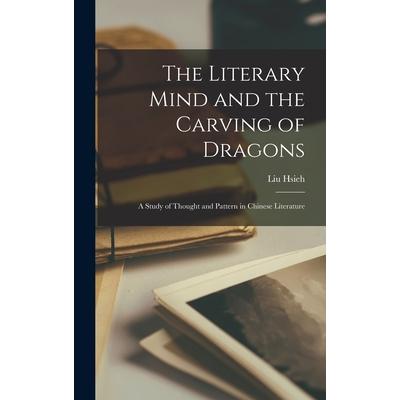

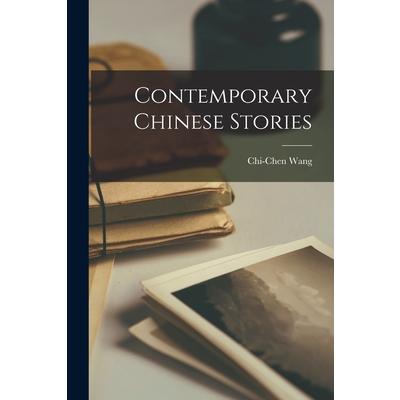

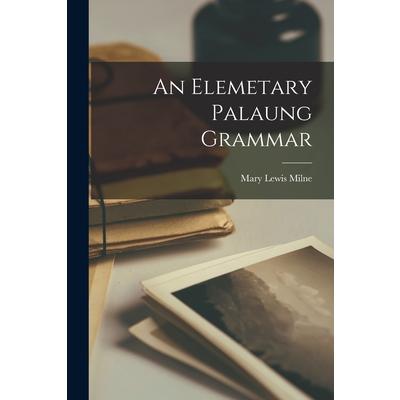
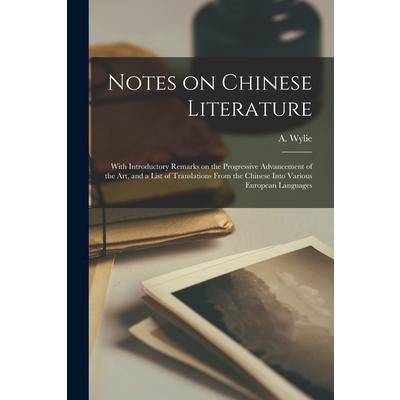
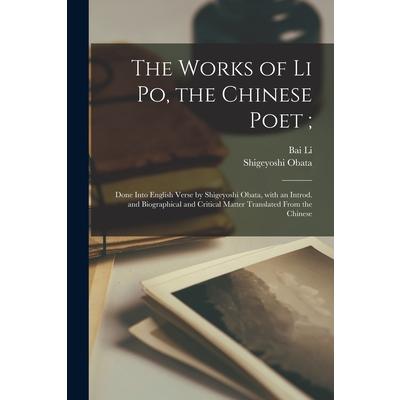
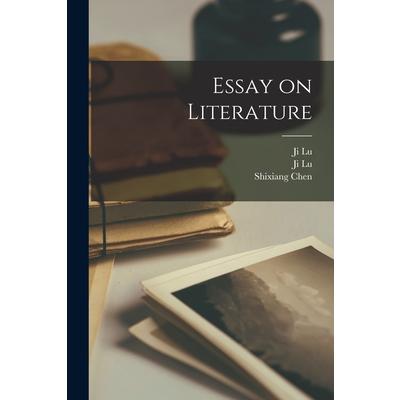

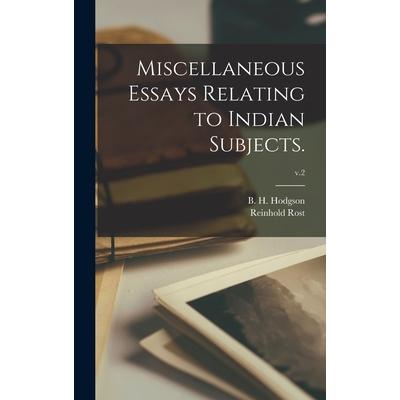

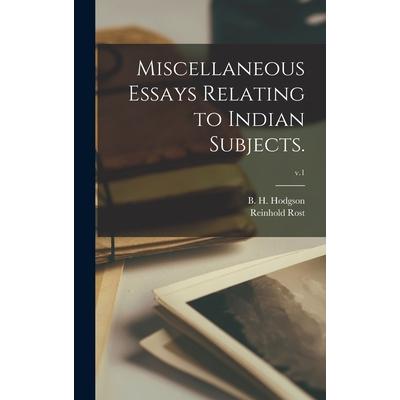
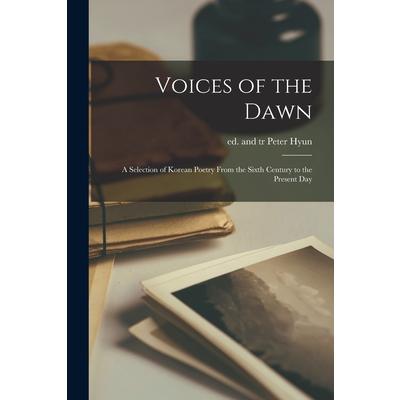





![[Japanese Pamphlets, Vol. 4]; 4 [Japanese Pamphlets, Vol. 4]; 4](https://cdn.kingstone.com.tw/english/images/product/7250/9781014977250.jpg)
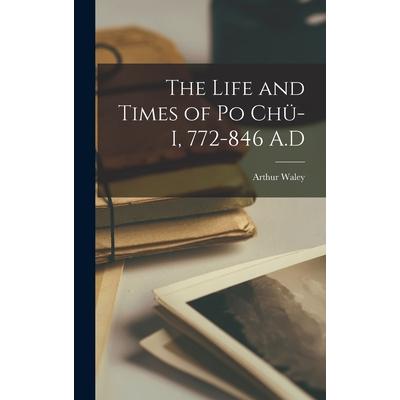
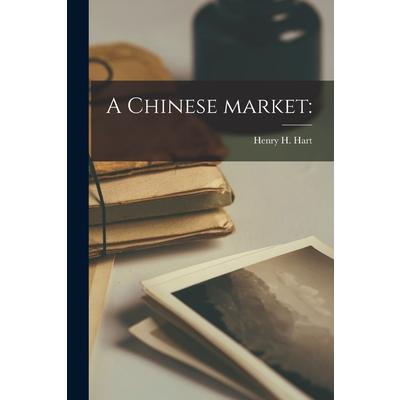

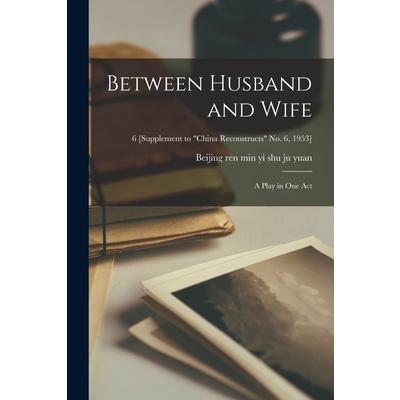
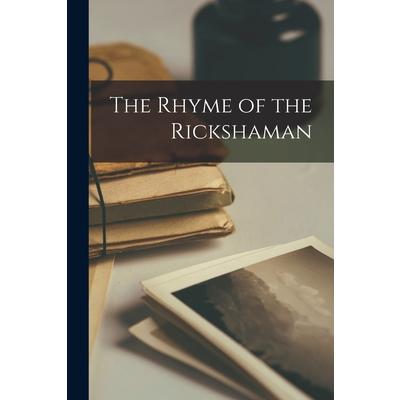

![[Japanese Pamphlets, Vol. 2]; 2 [Japanese Pamphlets, Vol. 2]; 2](https://cdn.kingstone.com.tw/english/images/product/8631/9781014268631.jpg)


